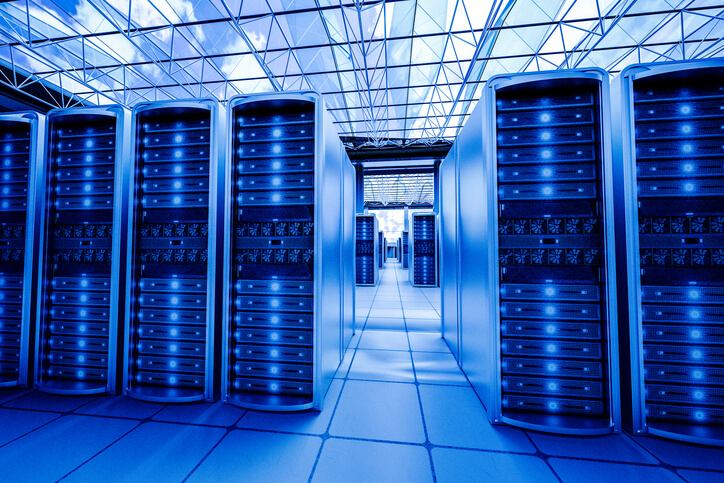Data centers have very specific HVAC needs that are different from most other industrial settings. When selecting HVAC equipment and designing a system specifically for data center cooling, the following three considerations must be top of mind:
- The location of the servers and other key equipment
- Access to electrical supplies and overall electric loads
- Appropriate parameters for temperature and humidity in different zones
Understanding Location of Servers and Other Key Equipment
For the owner of the data center, the servers key supporting equipment represent a significant investment that must be protected at all costs. It is impossible to design a safe and effective HVAC system without first knowing precisely where in the building the servers and the key supporting equipment will be located.
The server room will be the focal point of the design. Every decision from what equipment works best to how much energy the system HVAC system will require depends on the size and location of the servers.
Another factor that will affect HVAC system design and functionality is the makeup of the server room. Often, server rooms have raised floors to allow easy access to infrastructure. These raised floors can affect air flow, temperature, and humidity in the server room. Sometimes server rooms will also have higher than average ceilings to accommodate large equipment racks.
Servers are also especially sensitive to air quality issues. Environmental contaminants such as dust or pollen can cause system failures or otherwise negatively impact the smooth operation of the servers.
Access to Electrical Supplies and Evaluating Loads
Not surprisingly, data centers require an extensive amount of electrical infrastructure. Designers will need to make sure their system does not interfere with access to the electrical supplies the servers depend on.
The HVAC system will need an electrical supply independent of the server room. Without an independent electrical supply, the HVAC system could easily put too much load on the electrical system and cause a catastrophic power outage.
The HVAC design team also needs to ensure that the planned building electrical infrastructure can fully support the planned units, the existing server load, and still have enough capacity for additional servers in the future. Moreover, the HVAC team needs to work closely with the engineering team to ensure the completed project is within all of the project specifications.
Parameters for Temperature and Humidity Control
Data centers have a much narrower range of acceptable temperature and humidity levels than a typical building. With the large amount of electronics housed in one area, it’s critical to keep everything cool without adding humidity. Servers are particularly sensitive to moisture. This is why the only plumbing near the server room is for the fire suppression system, the HVAC system, and where server rooms are internal rooms with no windows or outside facing walls.
The data center engineers are keen to limit the amount of plumbing to the bare minimum required.
Considering Hybrid Cooling Systems in HVAC Design
Because data centers have such a large energy profile, require high levels of internal air quality, and they need to keep temperature and humidity in tight parameters, they are often well served by hybrid evaporative cooling systems.
These systems meet the revised ASHRAE temperature and humidity guidelines while also being much more energy efficient than traditional HVAC systems. Additionally, they also are able to eliminate the issue of poor air quality that plagues traditional systems.
These state-of-the-art hybrid systems are also more efficient at regulating different zones within the building. It is easy to keep the server room and other sensitive areas of the data center within the strict parameters while making other areas of the facility more comfortable for the people working there.
Read more about Hybrid Cooling and contact Air2O to discuss a solution for your data center.


